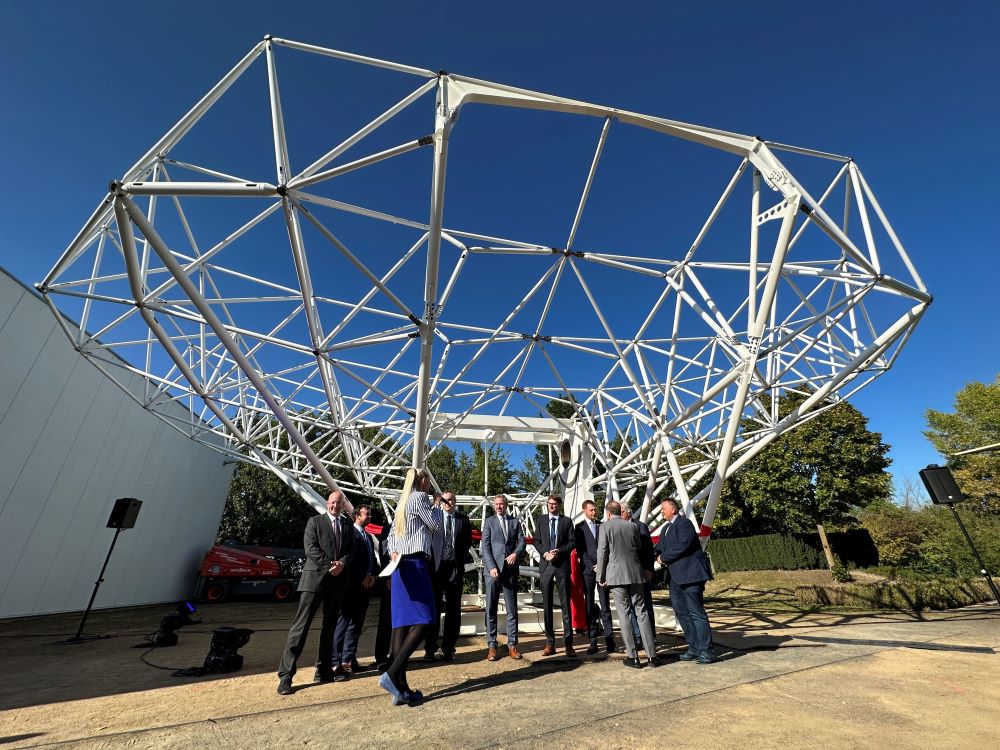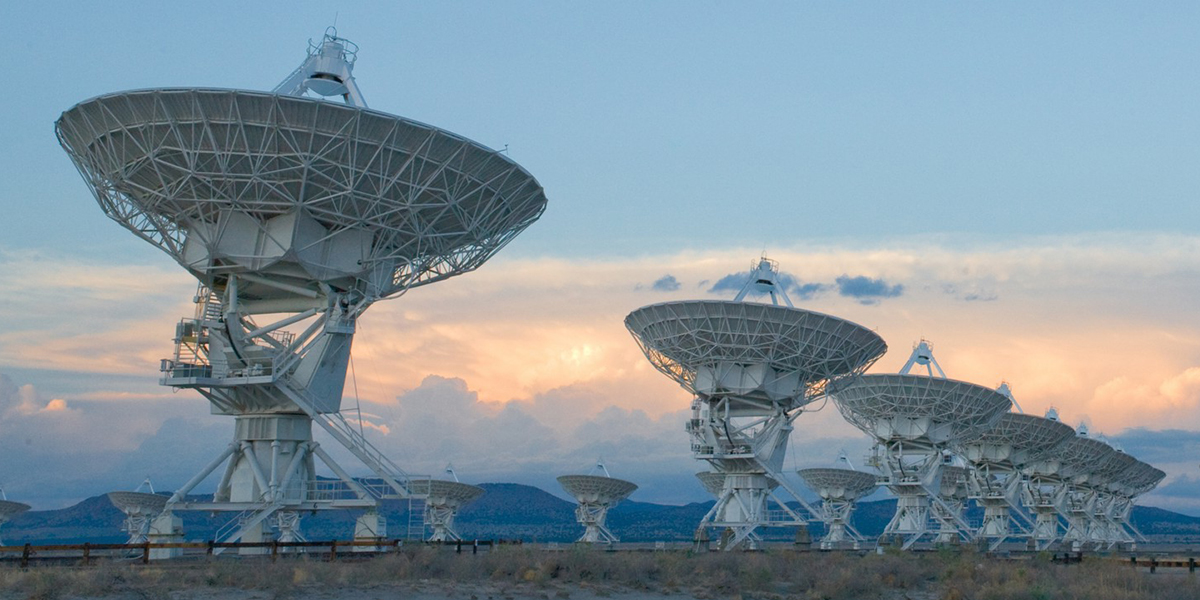The National Radio Astronomy Observatory (NRAO) recently disclosed a prototype radio telescope antennae for its next generation Very Large Array (ngVLA) to a group of press, scientists, engineers, and government and business leaders from the United States and Germany at the end of a workshop held at the Max Planck Institute for Mathematics in the Sciences in Leipzig. While construction on the ngVLA isn’t slated to begin until 2026, this recent unveiling provided an opportunity for mtex antenna technology to present its 18-meter dish, which consists of 76 individual aluminum panels arranged in an 8-sided shape.
Continue reading “A Sneak Peek at the Next Generation Very Large Array’s New Antennae”A Sneak Peek at the Next Generation Very Large Array’s New Antennae


